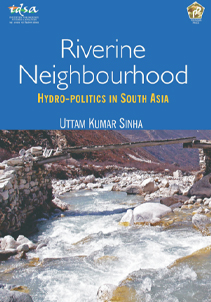The Changing Definition of Kashmir
If the attack on the district collector’s office in Srinagar in January and the attack on the Jammu and Kashmir tourist office on the eve of the inauguration of the Srinagar-Muzaffarabad bus service came as a harsh reminder of Kashmir’s violent history, the overall mood in the valley, for a couple of reasons, suggested otherwise. In recent months, the people of Kashmir have sent a message: Freedom can wait, but development cannot. Two developments symbolise the transformation of popular mood.
Indo-Pak Peace Process: Keep the Process Afloat
India-Pakistan interaction, in recent days, is fast losing its familiar flavour of distrust and bitterness. This is not to deny, however, that one can still identify the inertial sense of rancour, the propensity to misunderstand and misinterpret each other within the dialogic track that has completed one year.
Indo-Pak Ties and Visit of Pak PM Shaukat Aziz
The intense media interest and the more modest outcome of what ultimately transpired after the just concluded visit of the Pakistani PM Mr. Shaukat Aziz to New Delhi is in many ways indicative of the tone and texture of Indo-Pak relations at the present moment. While the two nations have had a relationship of varying degrees of hostility and bitterness since October 1947, the agreement reached in January 2004 over the Composite Dialogue Process (CDP) is the framework in which bi-lateral ties are now being pursued.
Indo-Pak Relations and the SAARC Summits
The uncertainties regarding regular SAARC meetings have clouded the prospect of regional cooperation. Though India has been accused as the main culprit, other member-countries are no less responsible for the organisation’s lack of progress.
India’s Military Strategy: Countering Pakistan’s Challenge
This book explores what military strategy is and how it is interconnected with policy on one hand and military operations on the other. In the process, it traces the transformation of the notion of strategy from its original military moorings to a more policy-oriented and-influenced conception and elaborates upon a tripartite framework of policy, strategy and doctrine to think about, understand, and analyse the use of force. The book explores the politics of India-Pakistan conflict in order to root the study of Indian military strategy in the political sphere. It discusses three main issues that have ensured the persistence of conflict: incompatible national identities, Pakistan's congenital quest for parity with and compulsion to challenge India, and irreconcilable positions on the Kashmir issue. The book argues that India has invariably pursued limited political aims that did not threaten Pakistan's survival or form of government or regime in power albeit containing a counter offensive elements. It states that India employed the strategy of exhaustion during the Indian Army's campaigns in the 1947-48 conflict and 1965 war, which made way to strategy of annihilation during the 1971 war (East Pakistan), but after Pakistan's acquisition of nuclear weapons capability the strategy is back to exhaustion. The book highlights the importance of designing an overall military strategy for waging limited war and pursuing carefully calibrated political and military objectives by creatively combining the individual doctrines of the three services by establishing a Chief of Defence Staff system.
- ISBN: 9789356400023 ,
- Price: ? 1299/-








